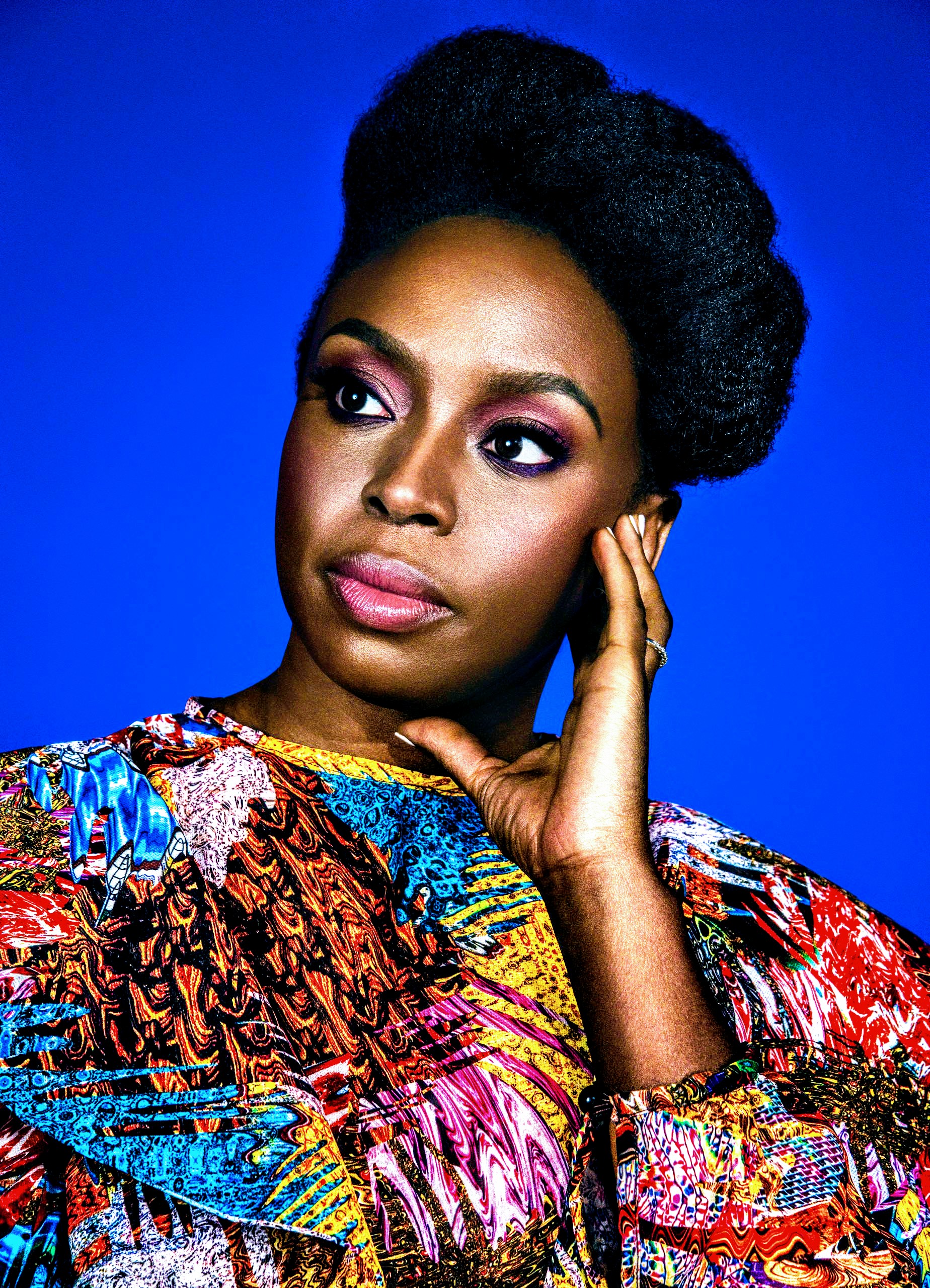Many voices create different stories. They are treasured because they bring unlimited vibes and scenarios of humanity’s Earthly movements. Earthly beats. Stories give testimony to reality’s diversity. Thereby, coloring it as exciting and innovating. There is beauty and enrichment in different stories; their conveying of life’s riches. The fact that there are many means different pictures, designs, and patterns are intrinsic to the imagery of life’s presence. Furthermore, it translates into the world acknowledging how not everyone has the same experience. Not everyone goes through the same path on this journey called, life! That’s what makes storytelling, more fascinating!
In the world of storytelling, there should be no monopoly. At least, that’s what we should be reaching for. In the real world, that’s not the case. Limitations of the human mind have created a kind of barrier. Some of these restrictions are related to ego, negative conception of self, and choice. While ignorance plays a role in being limited, we have to keep in mind that there is the factor of people choosing to be ignorant. Or, in a terse amount of words, selecting to see, what one wants to see. After all, if individuals have the excuse of one image, or one interpretation, of a culture, person, or collective of people, then preconceived perceptions can go unchallenged. Instead one can go about in the manner of crafting individuals into pre-determined stereotypes, suitable for how one wants to see a person, or collective body of people. The idea has already been set in stone. People are simply looking for “evidence” to support their linear perceptions.
Listening to the talk by famed, and award-winning, Nigerian author and writer, Chimamanda Adichie Ngozi’s, “The Danger Of A Single Story,” listeners and audience members are given an entry into what that world looks like. Ngozi’s story is poignant. Telling. Reflective of her life as a little girl in Nigeria; all the way up to studies of higher education. The notion of literature being equated to Europe, and children not resembling her is articulated within the talk. Outside perceptions of her “African” identity as solely being connected to that of poverty, despair, and consistently dependent on foreign assistance for their very survival. Ignoring that Ngozi comes from Nigeria (a country), and therefore cannot give an entire interpretation of “Africa.” These are the rigid boundaries, in which the Continent has been constructed, by many foreign eyes. The fact that success, beauty, and cultural aesthetics can be found on the “Dark Continent,” seems “unusual” for many having crafted her “suitable” image, within a particular box. In addition, there are some perceiving any other story as being presented for sheer entertainment. A joke. Wishful thinking. An insult that these stories have gotten, out of story!
In this notable lecture, there is clearly a discussion of self worth. What happens when one chooses to break outside of the confines of a dominant story, and its depiction of you? Shaking up structures and perceptions, which do not convey the entire picture. Failing to present the many stories. Suffocating the very existence of myriad voices, and burying them. Consistently going through periods of covering them, so that they are never to be seen, again. Hiding them becomes an addiction. Its as if there is an urge to capture those very stories, in order to ensure that they are not part of the conversation. This is especially true, when the stories paint a more happy and inviting tale of one’s experience. A tale of self-sufficiency, independence, and tales of before. Stories where one views self as being co-creators of reality, rather than constricted within in. Even worse, finding contentment in one’s misfortunes, with no hope or ambition of moving out of them. Such narratives are presented as being arrogant, “uppity,” and “unusual.” For a people to see the beauty and positive of their very existence. “How odd!”
What makes this conversation exceedingly nutritious to the human Spirit, is how it defies the notions of statistics, and “facts,” needing to be honored and permanently reflecting the society’s they describe. As if numbers cannot change. As if society is not supposed to evolve; particularly on the African Continent. Reflections within “The Dangers Of a Single Story,” are different forms of psychological and emotional defiance. Defying boundaries and unnatural constrictions in how one should be, behave, or perform, simply because one is African. Defying the boundaries of needing to “fit the part” of “the African.” As if every single African person has never made contact with the outside world, “lacking creativity” in their own spatial landscapes, or are “content” with insufficiency or inadequacy within their own countries. How Chimamanda Adichie Ngozi brings forth the audacity for artistry to be recognized in Nigeria, and the entire African continent, showcases spiritual, emotional, and mental healing slowly arising.

Another eye opening segment of the talk is the pivotal moment when Ngozi discussed her childhood, and the life of the young boy, Fide, who worked in her family’s middle class home in Nigeria. Fide came from a poor family, and in her girl years Ngozi was reminded of Fide’s misfortunes. Yet, going into the young boy’s village area, during one visit, the famed, Nigerian author was introduced to a beautifully made basket. Such a treasure and craftily designed aesthetic, and here it was found in a space, deemed to be removed from life’s treasures. Supposedly displaced from the Universal mastery of creativity, and only filled with an arena of pity and sympathy. Here was beauty being found in one “poor area,” of Nigeria. This surprise from the author, that someone as poor as Fide could immerse in the world of Universal aesthetics, wonder, imagination, and creativity. Nevertheless, it was a lesson that the Universal is limited to no particular class, nation, or societal barrier of hierarchy. In fact, it is often within those marginalized communities, where the Universal treasures and knowledge are most explored.
“The single story creates stereotypes, and the problem with stereotypes is not that they are untrue, but that they are incomplete.”
“The Danger Of A Single Story”-2009 TEDGlobal, Chimamanda Adichie Ngozi
The problem with the single story, is that it is just that, single. The richness of this statement, by Chimamanda Adichie Ngozi rings of great vibration. In fact, the very term single speaks on its own limitations. It highlights the lack of investing in a communal spirit. Staying in isolation, and sitting back to observe from the objective. Treating a person as a personal, laboratory experiment. Testing them and viewing how well they align with the model, already prescribed for them, by a single design. Should that person, culture, or community fall out of alignment with that design, it is they who are subjected to investigation, question, or inquiry, as opposed to the design, itself.
What is also further dangerous, regarding a single story is that the person, or society, who has created it, has been on the outside. Their knowledge is limited. Rigid and stifled as they have not maneuvered through the spacing, and immersed with the culture of people they claim to know. Projecting themselves as “experts,” and seemingly knowing more about the culture and spacing, than the very people who have produce it, in a her/historical context. Its mesmerizing, in fact!
Single stories lack diversity. They lack the myriad coloration found in Universal spacing. Its why single stories are dull and bland. In fact, they are rather depressing and lifeless. Furthermore, those creating the single stories are the one’s who lose the most. Missing out on the riches of those stories; all the while imprisoning themselves in one-dimensional constrictions of what the world should be. In their minds, the most suitable category for how a particular people or culture should behave. Often, the designs created to maintain a social hierarchy, while protecting insecurities based on notions of superiority. At the end of the day, the personal is part of nourishing the political. Self-esteem is part of the dynamic. That’s clearly, for sure.
Throughout this lecture, the theme concerning dignity, and how single stories take away the dignity of a people, was conveyed. Often that one-sided story comes from an outside lens. A distant (and not so distant) gaze, which chooses to remain on the outskirts; positioning itself as the primary interpreter for another people’s existence. Refusing to hear their story. Their many stories. Marginalizing oneself in order to sustain the social hierarchy and rigidity of difference. After a while, such isolation begins to deteriorate the emotional and mental wellness of those choosing to stand on the sidelines of others’ very existence. Too often viewing the observed as a source of pity, they miss out on knowledge and stories, which could be vital to their very own existence, health, and survival. That’s another issue concerning the “single story.” It positions others as running over with the savior complex, to assist others, while ignoring the inner healing work, needed for those coming with a “superiority” complex. In a terse amount of words, they miss out on the healing process. They are removed from the healing power of endless stories.
“So, that is how to create a single story. Show a people as one thing, as only one thing, over and over again, and that is what they become.”
“The Danger Of A Single Story”-2009 TEDGlobal By Chimamanda Adichie Ngozi

The above mentioned quote is greatly connected to the mental and emotional psyche of those, who look from the sidelines, and project the single story, of the people they wanted to pity. Consistently, and purposefully, drawing upon that single story as truth, in order to believe a faux validation, in the story being, true. After a while, ignorance cannot be blamed for the repetition, as to “repeat” an action, means that one has made a choice. That there is deliberation in purposefully conveying this story for intentions of causing harm, and re-framing a people’s image, as a negative. Wanting that image to match the hatred and prejudice of one’s projection against a particular person, community, or collection of people. Anything else would force mental healing for those standing on the sidelines.
“It is impossible to talk about the single story, without talking about power. . .How they are told, who tells them, when they’re told, how many stories are told, are really dependent on power.”
“The Danger Of A Single Story”-2009 TEDGlobal By Chimamanda Adhichie Ngozi
Even committing further damage, there is the power of convincing people of them only having one story. A story, framed onto them by the outside, which depicts them as a stagnant and lifeless. Removing their humanity and any contributions to the very term. If a people are only given this single story, while having lost all memory prior, of who they are, they come to believe the superiority of those standing on the sidelines. Soon, if the many stories are not passed down, a people come to believe that, single story. One that is told from foreign eyes. Eyes which see what they want, regardless of the different sounds and pictures, at play.
One of the most powerful elements of self-worth, self-esteem, and reclaiming of human dignity is for a people, or community, to highlight their many stories. Showcasing the myriad colors of their existence, and allowing themselves to be the chief, and primary experts, of their culture and her/history. As long as it is aligned with her/historical context and timing’s truth. Removing a people’s voice from their own story, is how a people are stripped of their power. Keeping them silent, removing the voices and imagery of their authentic feminine presence is how a people are stripped of their power. When a people paint, craft, design, and perform the authenticity of their culture, and very Being, they find liberation.

As I reflect upon this treasured 2009 speech by Chimamanda Adichie Ngozi, I become even more compelled in taking an inner observation of the many stories. Whether it be my own culture, or those nations I have traveled to. The people and communities I have immersed with, along the way. Many stories make life much healthier. It erases prominent notions that the majority of the world is riddled with chaos, confusion, and destruction. Furthermore, as with Ngozi’s experience with the little boy, Fide, even in the poorest places, human creativity and genius can flourish. Acknowledging that aesthetics is found everywhere, is what empowers people. In many ways, the creative entities level the playing field. When you see that a person, or people, can create, you can no longer pity them. Furthermore, it becomes impossible for you to use whatever challenges they face as foundation for one’s low self-esteem. At that moment, a person has a decision to make. Opening one’s mind (and adopting a willingness to learn), while being liberated from mental constraints OR staying in restricted delusions, which morph into lies, while trying to maintain a strict rigidity for another’s demise. Those are clearly the only two options.
Its much more fun to read about different stories. More enchanting and adventurous! With many stories, you see the different lights of people. They are illuminating and vivacious! Boundaries of difference are shattered. Rather, one has the power to celebrate difference, in how it leads us to locating familiarity. That is the delight and retreat of being able to hear the myriad stories and spaces, when we travel to different worlds, communities, and cultures. In many regards, we are healed. Treated to a level of nourishment and abundance for the well-being of all. It becomes a wonderland! A paradise where differences are celebrated and viewed as interchanging displays of knowledge. Knowing that we can learn from each other. That every culture and group of people on this entire planet has an entity of creative stories. Whether they are told orally, visually, craftily, or through the written word. They are stories. They are blessings, and they bring about a hidden aura of life’s presence. Forcing those willing to listen, to the invisible gems of Universal blessings. Those treasures serving to reveal some of that knowledge, produced from the human mind. Inciting into human development and artistry. Collecting the experiences in how humanity has matriculated throughout Earth’s varied landscapes, and showcasing the many, different voices. A visual display of balance, health, and wealth, in the discovery of many hidden gems, of stories, to be found!

To watch the “The danger of a single story,” by Chimamanda Ngozi Adichie, you can click on the following link: https://www.ted.com/talks/chimamanda_ngozi_adichie_the_danger_of_a_single_story?language=en
For more information on the award-winning, Nigerian author and writer, Chimamanda Ndichie Ngozi, you can click on the following: https://www.chimamanda.com/


